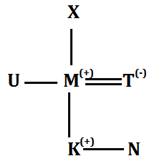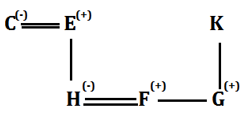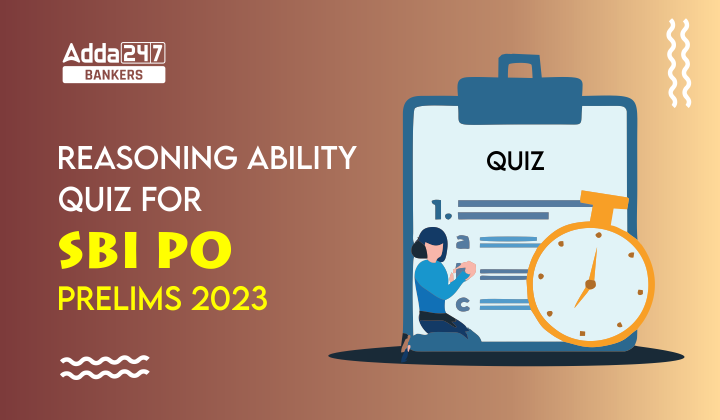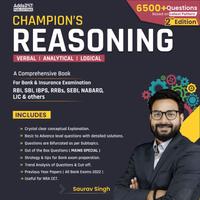Directions (1-3): In the following questions, the symbols #, &, @, *, $, % and © are used with the following meanings as illustrated below. Study the following information and answer the given questions:
A@B- A is the child of B.
A©B- A is the parent of B
A%B- A is father-in-law of B
A&B- A is brother-in-law of B
A$B- A is brother of B
A*B- A is wife of B
A#B- A is sister-in-law of B
Q1. If the expression ‘M©K$N@T#U, X©M$U’ is true, then which of the following is true?
(a) M is sister of U
(b) K is granddaughter of X
(c) T is mother of K
(d) N is child of U
(e) None of these
Q2. If the expression ‘C*E%F$G@K, G&H@C’ is true, then who among the following is daughter-in-law of K?
(a) E
(b) H
(c) F
(d) C
(e) None of these
Q3. If the expression ‘T$U*W@X©Q$R’ is true, then who among the following is sister-in-law of R?
(a) W
(b) X
(c) T
(d) U
(e) None of these
Q4. The position of how many alphabets will remain unchanged if each of the alphabets in the word ‘QUANTITATIVE’ is arranged in alphabetical order from left to right?
(a) Four
(b) One
(c) Two
(d) Three
(e) None
Q5. How many pairs of letters are there in the word “COUNSELING” each of which have as many letters between them in the word as they have between them in the English alphabetical series?
(a) Four
(b) One
(c) Two
(d) Three
(e) More than four
Directions (6-10): In the following questions assuming the given statement to be true, find which of the conclusion(s) among given conclusions is/are definitely true and then give your answers accordingly.
Q6. Statements: Q > A = E ≥ S = T, J = A > L ≥ M, Y = R ≥ A > O
Conclusions: I. Y < Q
II. Y > M
(a) Only conclusion I is true
(b) Only conclusion II is true
(c) Either conclusion I or II is true
(d) Both conclusions I and II are true
(e) Neither conclusion I nor II is true
Q7. Statements: G < Q = C ≤ N = X, S > N = E > M, Z = J = S > L
Conclusions: I. Z > G
II. L > C
(a) Only conclusion I is true
(b) Only conclusion II is true
(c) Either conclusion I or II is true
(d) Both conclusions I and II are true
(e) Neither conclusion I nor II is true
Q8. Statements: N ≤ T = H < M, N = W ≥ K > S, P ≤ M = D
Conclusions: I. H > S
II. W < M
(a) Only conclusion I is true
(b) Only conclusion II is true
(c) Either conclusion I or II is true
(d) Both conclusions I and II are true
(e) Neither conclusion I nor II is true
Q9. Statements: V ≤ P = C ≤ H, N ≥ C < E = Y, P = L ≤ S = T
Conclusions: I. L > Y
II. N ≥ V
(a) Only conclusion I is true
(b) Only conclusion II is true
(c) Either conclusion I or II is true
(d) Both conclusions I and II are true
(e) Neither conclusion I nor II is true
Q10. Statements: I = E > W < L, D ≤ F = E < X, X < T = G > A
Conclusions: I. I < G
II. L < A
(a) Only conclusion I is true
(b) Only conclusion II is true
(c) Either conclusion I or II is true
(d) Both conclusions I and II are true
(e) Neither conclusion I nor II is true
Solutions
S1. Ans. (c)
Sol.

S2. Ans. (b)
Sol.

S3. Ans. (d)
Sol.

S4. Ans. (b)
S5. Ans. (e)
S6. Ans. (b)
Sol. I. Y < Q – False
II. Y > M – True
S7. Ans. (a)
Sol. I. Z > G – True.
II. L > C – False
S8. Ans. (d)
Sol. I. H > S – True.
II. W < M – True.
S9. Ans. (b)
Sol. I. L > Y – False
II. N ≥ V – True.
S10. Ans. (a)
Sol. I. I < G – True.
II. L < A – False





 GA Capsule for SBI Clerk Mains 2025, Dow...
GA Capsule for SBI Clerk Mains 2025, Dow...
 The Hindu Review October 2022: Download ...
The Hindu Review October 2022: Download ...
 Hindu Review March 2025, Download Monthl...
Hindu Review March 2025, Download Monthl...





